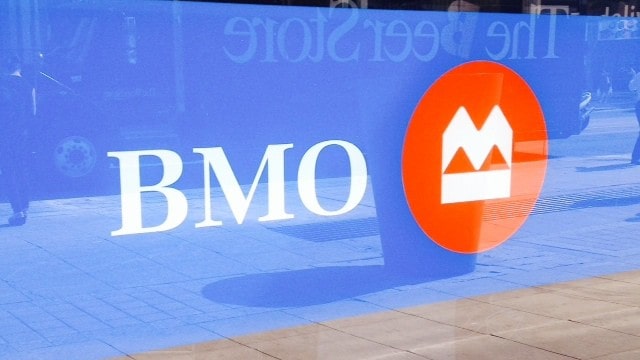Bank of Montreal (TSX:BMO)(NYSE:BMO), Canada’s fourth-largest bank, announced its third-quarter earnings results this morning, and its stock has responded by falling over 2% in early trading. Let’s break down the quarterly results and the fundamentals of its stock to determine if we should use this weakness as a long-term buying opportunity or a warning sign to avoid it for the time being.
The Q3 performance
Here’s a quick breakdown of 10 of the most notable financial statistics from BMO’s three-month period ended on July 31, 2017, compared with the same period in 2016:
| Metric | Q3 2017 | Q3 2016 | Change |
| Net interest income | $2,533 million | $2,474 million | 2.4% |
| Non-interest income | $2,926 million | $3,159 million | (7.4%) |
| Total revenue | $5,459 million | $5,633 million | (3.1%) |
| Total revenue, net of claims, commissions, and changes in policy benefit liabilities (CCPB) | $5,206 million | $4,942 million | 5.3% |
| Adjusted net income | $1,374 million | $1,295 million | 6.1% |
| Adjusted earnings per share (EPS) | $2.03 | $1.94 | 4.6% |
| Total assets | $708.62 billion | $691.68 billion | 2.4% |
| Deposits | $473.11 billion | $467.85 billion | 1.1% |
| Net loans and acceptances | $375.97 billion | $364.13 billion | 3.3% |
| Book value per common share | $59.65 | $58.06 | 2.7% |
Should you buy BMO on the dip?
The third quarter was decent at best for BMO, but it posted a very strong performance in the first nine months of 2017, with its revenue up 5% to $16.61 billion, its adjusted net income up 15.8% to $4.2 billion, and its adjusted EPS up 14.8% to $6.22. With these two things being said, I think the weakness in its stock is warranted, but I also think it represents a great buying opportunity for long-term investors for two fundamental reasons.
First, it’s undervalued. BMO’s stock now trades at just 11.3 times fiscal 2017’s estimated adjusted EPS of $7.97 and only 10.7 times fiscal 2018’s estimated adjusted EPS of $8.39, both of which are inexpensive compared with its five-year average price-to-earnings multiple of 11.8. These multiples are also inexpensive given its current earnings-growth rate and its estimated 5.5% long-term earnings-growth rate.
Second, it has a great dividend. BMO pays a quarterly dividend of $0.90 per share, equal to $3.60 per share annually, which gives it a lavish 4% yield. It’s also important to note that its recent dividend hikes, including its 2.3% hike in May, have it on track for 2017 to mark the sixth consecutive year in which it has raised its annual dividend payment, and it has a target dividend-payout range of 40-50% of its adjusted EPS, so I think its very strong growth will allow this streak to easily continue into the late 2020s.
With all of the information provided above in mind, I think all Foolish investors should strongly consider using the post-earnings weakness in BMO’s stock to initiate long-term positions.










